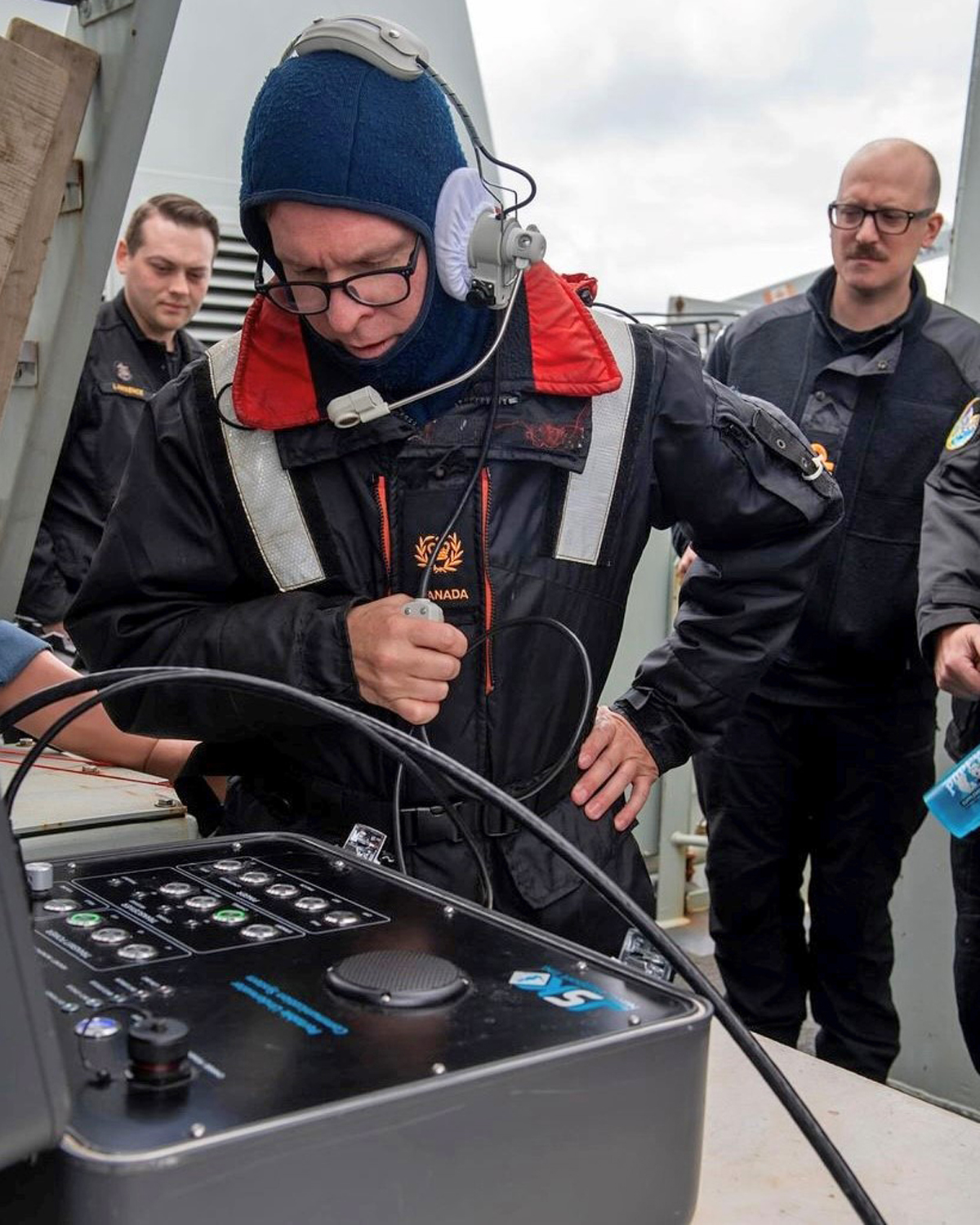SMASHEX 2024 Submarine Search and Rescue
By Lookout Production on May 30, 2024 with Comments 0

Chief Petty Officer 2nd Class (CPO2) Nelson Harvey speaks with HMCS Edmonton crew using HMCS Yellowknife’s underwater telephone.
Matthew Kerr, Communications Analyst,
CANSUBFOR HQ
—
Submarines are both lethal and stealthy, and those strengths come with increased risk. While emergencies at sea are rare, preparing for them can be the difference between life and death.
Joint Task Force Pacific and Canadian Joint Operations Command (CJOC) Maritime Component Commander worked with Pacific Fleet assets and Canadian Submarine Force (CSF) personnel to exercise how the Royal Canadian Navy (RCN) would react to a submarine search and rescue (SUBSAR) operation. This was the first time a SUBSAR exercise, or SMASHEX, was controlled by CJOC.
Participants included the crews of HMCS Yellowknife and Edmonton, CSF SUBSAR specialists and the Seabed Intervention System (SBIS) on the West Coast as well as participants in Halifax, N.S., and Ottawa, O.N.
“When they occur, SUBSAR reactions are a whole-of-government operation,” said Lieutenant-Commander (LCdr) Dave Hendry, one of the embarked CSF personnel. “Seeing the level of interest in this exercise from units across the Navy highlights the capabilities that we have, and how we can best use them to determine what’s happening onboard a distressed submarine.”
The SMASHEX began with the Submarine Operating Authority sending a message that a fictional submarine had failed to check in as expected, prompting recalls on both coasts.
Within hours, HMCS Yellowknife and Edmonton had embarked CSF personnel and deployed portable underwater telephones to contact the distressed submarine, represented by a local wreck. The underwater telephones are placed deep underwater and allow communication between the surface ship and the submarine. Fleet Diving Unit (Pacific)’s SBIS team also deployed to the location, providing underwater imagery of the stricken submarine using their REMUS 100 system. Messages and imagery were then routed through both the International Submarine Escape and Rescue Liaison Organization website and through MS Teams, arriving in Halifax for senior decision makers within minutes.
“This exercise has given us the confidence that we can control a SUBSAR incident from any part of the country, and that the resources available to us through CJOC will enhance the RCN’s, and Canada’s, ability to react in an emergency,” said LCdr Hendry.
The RCN runs a SMASHEX on each coast every year.

Sub-Lieutenant (SLt) Mitchell Coulombe and SLt Kayla Coletta deploy the underwater telephone from HMCS Yellowknife. Photos: Sailor 1st Class (S1) Brendan McLoughlin.
Filed Under: News Release • Top Stories
About the Author:





